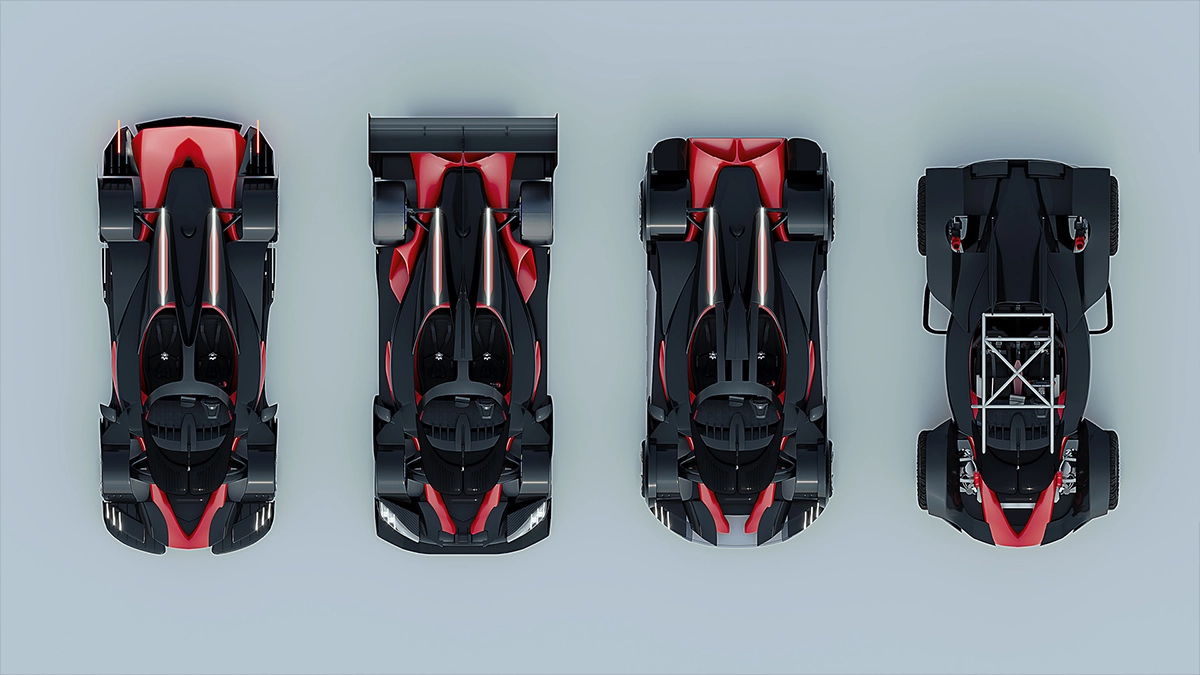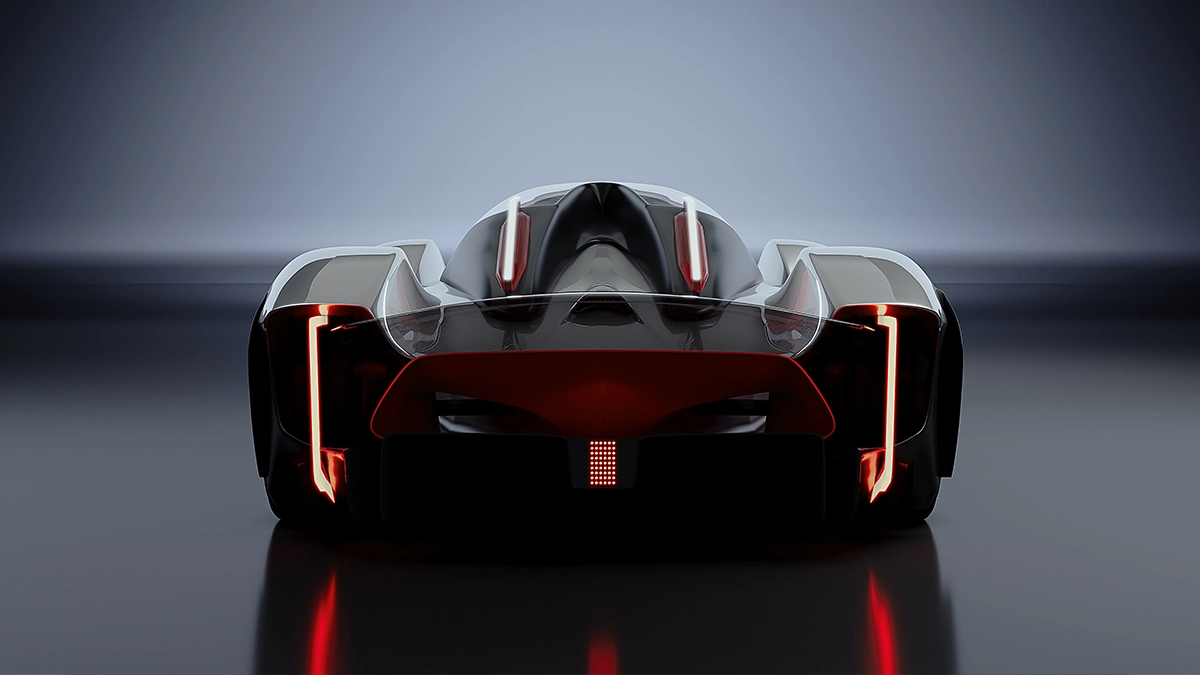The automotive industry is changing significantly with the rise of electric and automated vehicles. They want to create a system that uses common parts and flexible modules, making designs good-looking and versatile vehicles for various purposes easier. This makes production more efficient and increases profits by using a shared "library" for different types of vehicles, from regular roads to tough racetracks and off-road terrains. Keeping this fact in mind La Forma Lirica Is Designed with modular innovation, offering a diverse range of vehicles catering to different terrains and preferences. It combines style, performance, and environmental responsibility in a versatile electric racing platform.

Drawing Inspiration from the Riviera di Levante
Inspired by real experiences along the Riviera di Levante, the project aims to develop a modular, all-electric racing platform that can be used on roads, tracks, and off-road terrains like deserts. It targets a sophisticated audience, specifically middle-aged men who appreciate style, taste, sleekness, and elegance. The project caters to car enthusiasts with a strong sense of environmental responsibility.
The form research starts with simple sketches. The goal is to create a balanced contrast between clean shapes and linear geometric layers. Drawing from the retro style of early 60s sports cars, the speedform design aims for a graceful, elegant, and classic look.

Refining the design with sketches, 3D models, and clay, the final product is a 2-seat sports car with a wheelbase over 3 meters. The front has a neutral look and includes a unique red air duct called the "air tunnel," inspired by FIA endurance racing prototypes. The full glass greenhouse, shaped like a bubble, connects to replaceable battery blocks at the back, maintaining a weight balance similar to current mid-engine models.


Technological Innovations is Powering the Future with Racing and Off-Road Versions
Using advanced quasi-solid-state battery technology, which is both compact and highly productive, the project aligns with the ongoing research of major corporations. The racing version undergoes aerodynamic improvements, such as replacing plexiglass parts with carbon fibre, widening the floor, adding a diffuser and spoiler, and adopting a closed monocoque for enhanced stability.
The off-road version, designed with elevated ground clearance and a double wishbone suspension, has a robust appearance with distinctive bodywork made from two metal pieces. Additionally, a semi-offroad version is introduced for a luxurious on-road experience, demonstrated by an alpine trek from Portofino to St. Moritz.

The platform's key components, such as the carbon monocoque for two passengers, side air intakes, and replaceable batteries with plexiglass shark fins, are shared across all versions. Notably, the off-road version exhibits a lowered sitting position and reinforced cabin structure with tube frames.
In its commercial form, the neutral design reduces the weighty, aggressive feel often linked with modern sports cars. With a length of over 5.2 meters, this version displays striking proportions, offering a distinctive and slightly unconventional driving experience.
Conclusion
The automotive industry is undergoing a transformative shift by adopting modular innovation, providing a versatile array of vehicles tailored to various terrains and consumer preferences. "La Forma Lirica" serves as a noteworthy example of this evolution, seamlessly blending elegance with environmental consciousness in a revolutionary automotive landscape. This project not only showcases the industry's commitment to adaptability and sustainability but also sets a precedent for future developments that prioritize both aesthetic appeal and ecological responsibility. As the automotive sector continues to advance, endeavours like "La Forma Lirica" underscore the exciting possibilities and positive changes that lie ahead for the world of transportation.
About Designers
The author's team consists of two close friends with a strong passion for automotive heritage approached through the lens of design. Ngoc Tran is a young architect working in Vietnam, with experience in project management and professional 3D modeling. Bao Tran is a bachelor's student studying transportation design in Pilsen, Czechia. Understanding and accumulating knowledge about car design over a long period, along with a burning passion for Italian design, inspired the pair of authors to participate in this complex project.
Follow Bao Tran on Instagram
Follow Ngoc Tran on Instagram

































